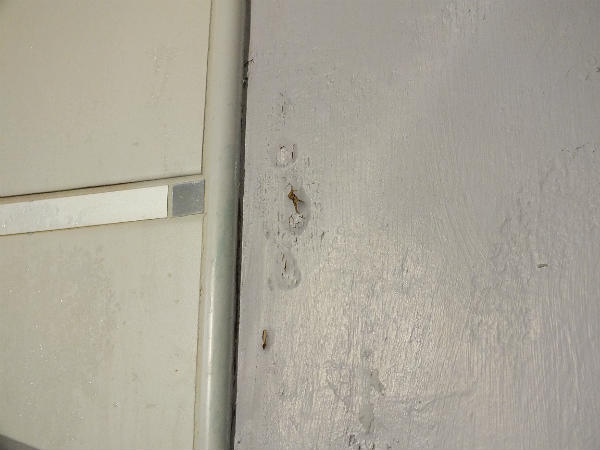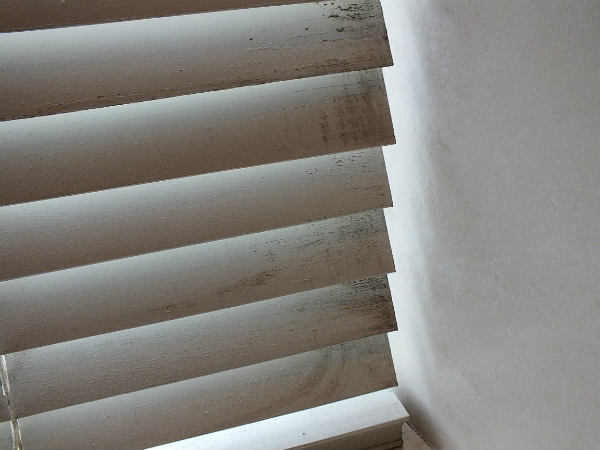What is Condensation
Doing to Your Home?
If I had a pound for every time I was asked "what is condensation?" I wouldn’t need to be working as a residential surveyor. It’s probably one of the most misunderstood occurrences within houses today and it's getting worse as we try to make our homes more air-tight!
What is condensation:
Condensation occurs when water vapour comes into contact with a cold surface (one that has a surface temperature below the dew point of the water vapour). Once this happens the water vapour condenses and forms tiny droplets of water on the surface in question. It's easiest seen on bedroom windows in the morning and on bathroom windows and mirrors following a shower.
Can it affect any house?
Yes… condensation can affect any home, but some homes are more susceptible to it than others.
For example:
- Houses without cavity insulation will have walls that are colder internally and will therefore be more susceptible to condensation as their wall surfaces are more likely to be below dew point.
- Households that dry clothes on radiators or cook without using lids on the saucepans will put lots of water vapour into the air and will therefore be prone to condensation.
- Homes that don’t have adequate ventilation, e.g. don’t open windows or trickle vents will get less ventilation and therefore have more water vapour in the air, so will be more likely to suffer from condensation.
- Households that may be financially disadvantaged are less likely to have their heating on long enough to keep the house warm. So surfaces will be colder and the dew point will be lower. So… you guessed it, more susceptible to condensation.
A lot of the problem can be down to lifestyle. So it is entirely possible that we could survey a house and detect condensation, yet when you move in and do all the right things you might never see any condensation.
So while it is true to say that lifestyle plays its part it isn't entirely down to lifestyle. Some house types are more prone to suffering from condensation than others. For example old houses with no insulation or solid walls are more prone to suffering from condensation.
However, you need to be aware that ALL homes can be susceptible to condensation if ventilation is inadequate or a lot of water vapour is produced.
So what if there’s a bit of condensation:
What is condensation doing to your home?
Condensation is easy to ignore and can be difficult to completely stop (particularly in older properties). So there’s often a temptation to put dealing with it on the back burner. “I’ll look at that next week,” but next week comes and goes!
But you should do this at your peril. There are several good reasons to deal with condensation immediately:
- Black, brown or Green Moulds - we’re all familiar with the dreaded black mould on walls (but brown and green also occur). Often seen in the corners of bedrooms and bathrooms, behind bed heads, in wardrobes or behind cupboards etc. It forms when the water vapour condenses on cold surfaces and isn’t removed (usually because it’s difficult to see on painted or papered surfaces). After a short time the mould starts to grow and that can be toxic.
- Rot - persistent condensation can lead to high levels of moisture in timbers which can lead to wet or dry rot.
- woodworm - as above high levels of moisture content in timbers can lead to beetle infestations (woodworm).
- Difficulty to heat property - I've attended an old house (c.1900) with solid walls which appeared to be in perfect condition internally with dry wall surfaces. Yet just below the surface, within the walls of the bathroom (behind the modern plaster which hides the dampness) the walls were saturated. (The standard two prong ‘damp meter’ said the walls were dry, it was only on further investigation with a different type of ‘damp meter’ that the true condition revealed itself) This means the walls are really cold (due to the moisture content) and therefore the house was really difficult to heat. Once the condensation issue was resolved the walls started to dry out. As the walls dried it became warmer and easier to heat as the heating wasn’t trying to heat up the wet bricks.
- Damage to decorations - condensation can lead to damage to painted wall finishes and wallpaper as mould grows on affected surfaces. Which is not only difficult to clean, it’s also expensive to replace.
How can a surveyor spot it?
If your surveyor is using the right equipment they should be able to tell you whether or not the property was prone to condensation and answer the question 'what is condensation doing to your home' by way of defects at the time of survey?
In addition to two different types of delectronic damp meter we also use a hygrometer that calculates dew point and can record wall temperatures to see if conditions are right for condensation to occur.
As previously mentioned, the conditions experienced by the surveyor at the time of survey may never be replicated when your move into the home as condensation will be influenced by lifestyle as well as property type and condition.
Reducing the Risk of Condensation:
There are some things that we can all do quite easily to reduce the risk of condensation issues in our homes.
- Don’t dry clothes on radiators or inside the home. If you must do this then try to do it in the bathroom with the extractor fan switched on.
- Make sure tumble dryers are vented to the outside of your home.
- Try to always use lids on pans when cooking. In addition to reducing the amount of water vapour in your home this also reduces the cost of cooking as you will be able to lower the temperature settings for your hob. For example my hob will simmer an open pan of water at a setting of 4 yet if I put a lid on the same pan it will simmer at a setting of 2.
- When showering make sure the extractor fan is switched on or a window is open. If you can afford it a humidity sensing extractor fan is a good option. Some of these will extract at a low level all the time and then ramp up the extraction speed as soon as they detect high levels of water vapour in the air. But be careful if you live in an area with high levels of Radon gas as you could end up creating negative pressure in your home and drawing in Radon gas.
If you’re looking at buying a property in County Down or County Antrim click here to request a call back and a surveyor will call you back to discuss your options.
- Home Page. ›
- Defects. ›
- What is Condensation?






